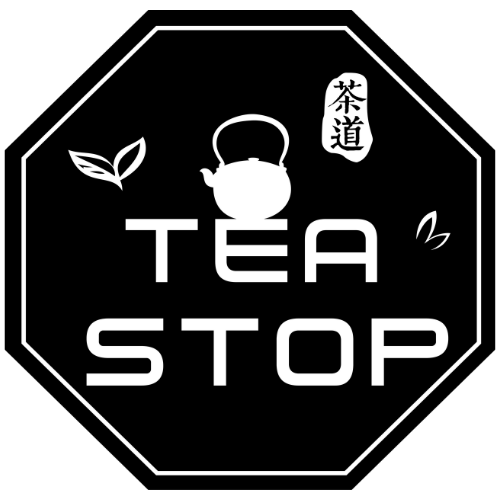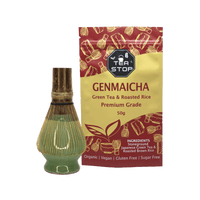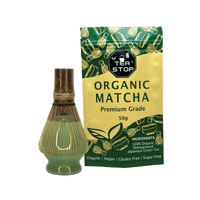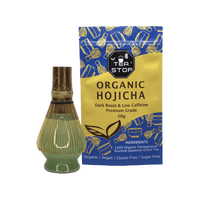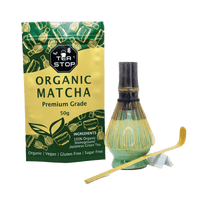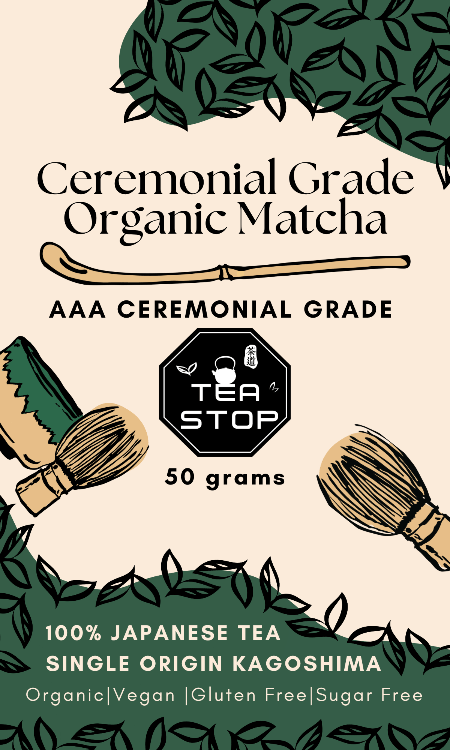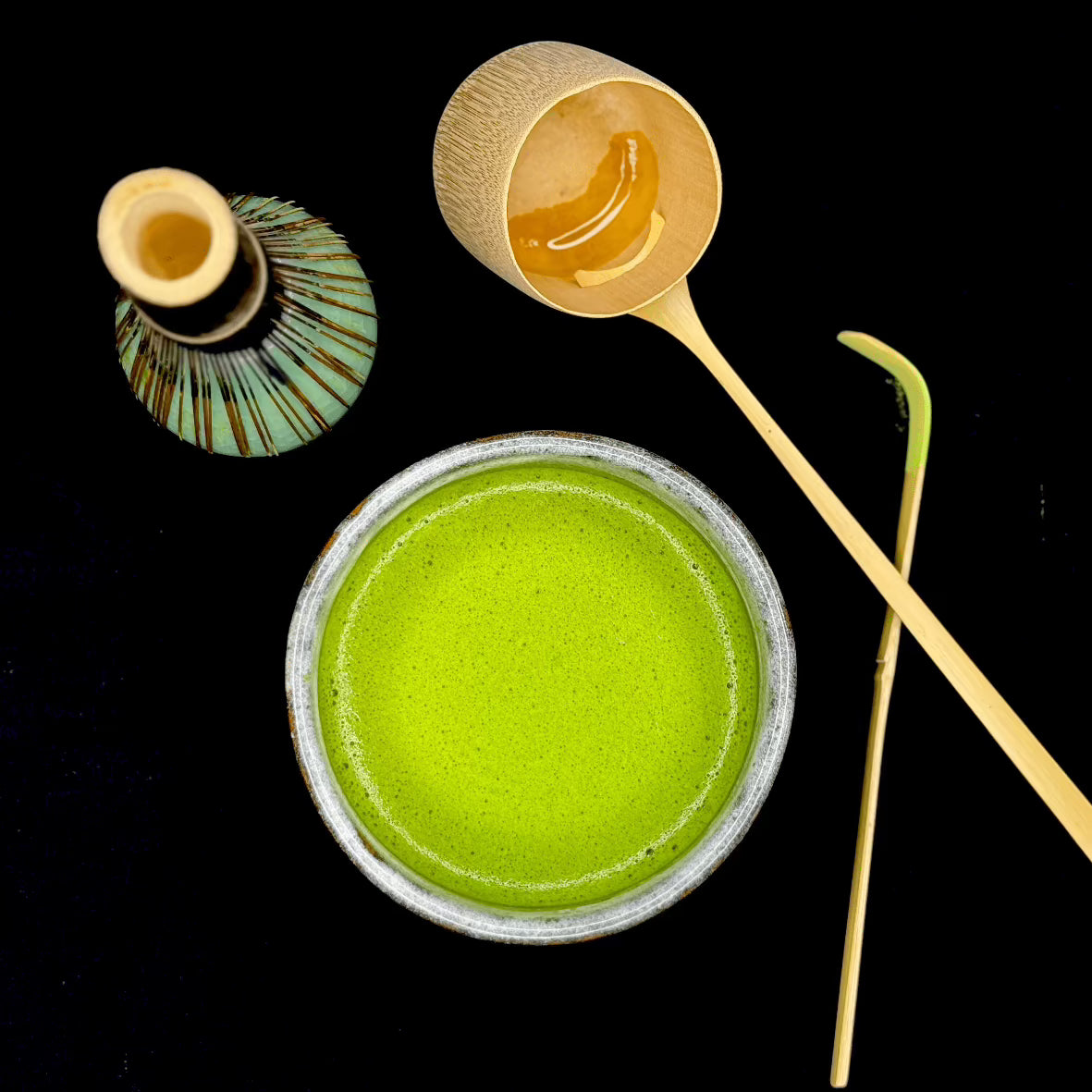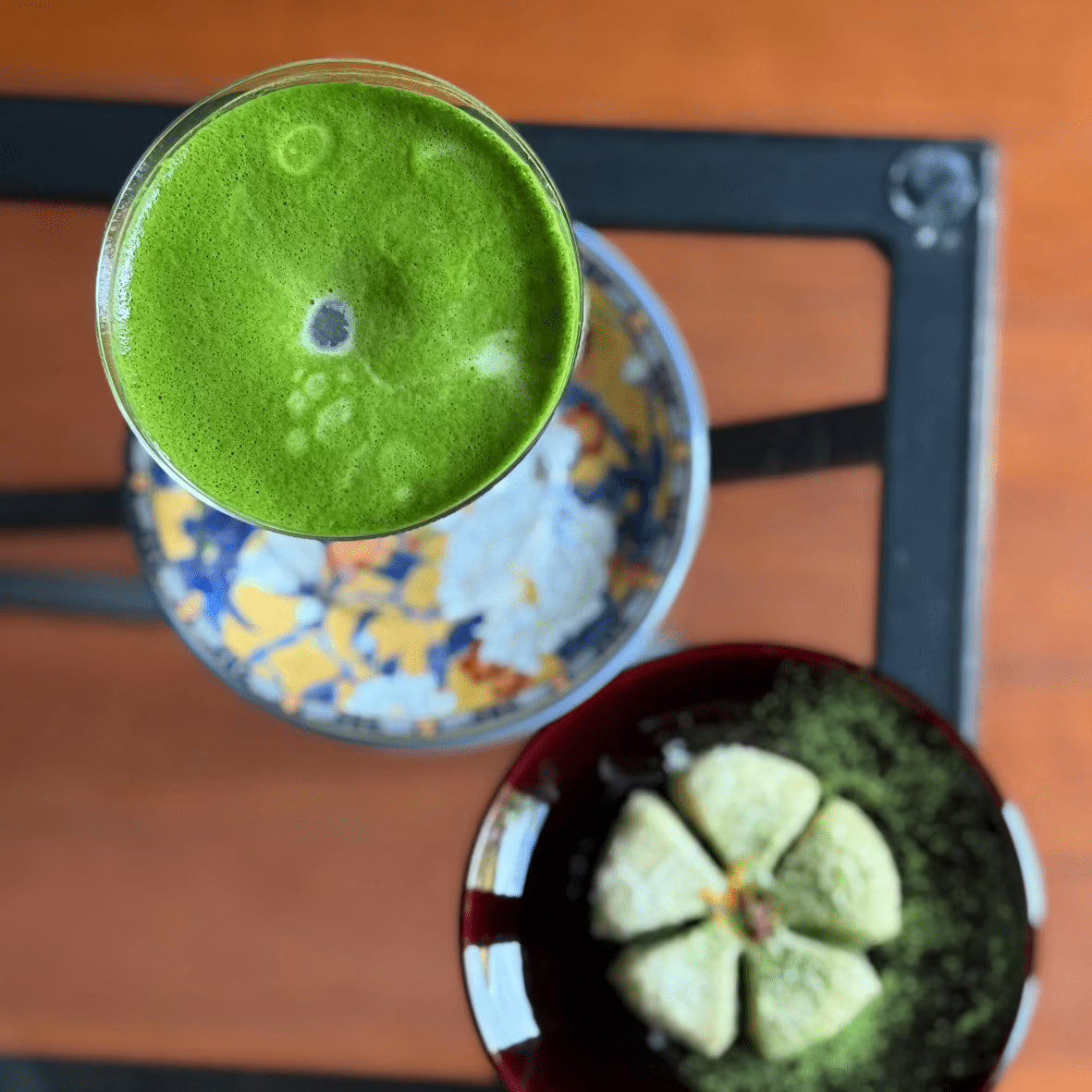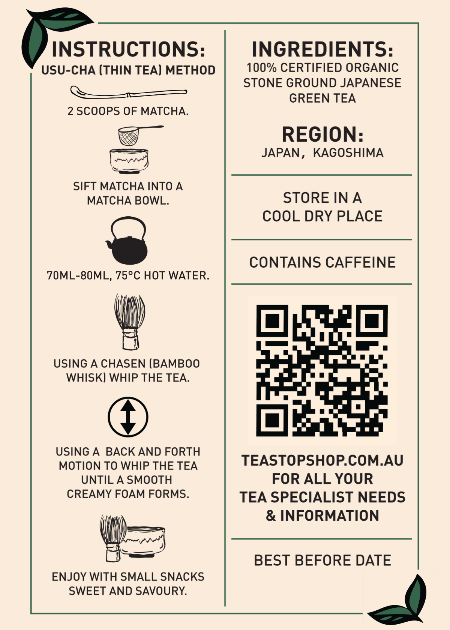What Is Matcha? A Beginner’s Guide to Japan’s Iconic Green Tea
Share
Matcha is a finely ground powder of specially grown and processed green tea leaves, cherished for centuries in Japan. Unlike other teas, it involves consuming the entire leaf, delivering a vibrant, grassy flavor and an energizing clarity. The ritual of preparing and enjoying matcha is woven into Japanese culture, symbolizing mindfulness, respect, and connection with nature, values reflected in every bowl shared during a traditional tea ceremony.
At Tea Stop Shop, we invite you to slow down and savour this ancient tradition. This beginner’s guide will gently walk you through:
- What matcha is and how it differs from other green teas
- Why does matcha hold such cultural significance in Japan
- How to unlock its many health benefits
- The different grades of matcha and their uses
- Creative ways to enjoy matcha beyond the cup
Let’s explore how matcha can bring intention, wellness, and mindful delight to your daily routine.
What is Matcha Tea?
Matcha tea is a special type of tea that is made from tea leaves grown in the shade and then finely ground into a powder. What makes matcha different from other teas is the way it is produced. Before the tea leaves are harvested, the plants are covered for several weeks to block direct sunlight. This method of growing tea in the shade increases the levels of chlorophyll and amino acids in the leaves, giving matcha its bright green color and unique taste.
Process of Making Matcha Tea
The process of making matcha involves several steps:
- Shade-Grown Leaves: Tea plants are shaded for approximately 20–30 days before harvesting.
- Harvesting: Only the youngest and most tender leaves are selected.
- Steaming: The harvested leaves are steamed to prevent oxidation.
- Drying: The leaves are dried and then deveined and destemmed.
- Grinding: Dried leaves are slowly ground into a fine powder using traditional stone mills.
Difference Between Matcha and Traditional Green Tea
Although both matcha and traditional green tea come from the same plant, Camellia sinensis, they are processed differently:
- Leaf Usage: Traditional green tea uses whole or broken leaves steeped in water, while matcha involves consuming the entire powdered leaf.
- Preparation: Green tea is brewed; matcha is whisked into hot water.
- Nutrient Density: Consuming matcha provides higher concentrations of nutrients due to ingesting the whole leaf.
Unique Flavor Profile of Matcha
Matcha has a distinct taste that sets it apart from other teas:
- Umami: A savory taste due to high amino acid content.
- Sweetness: Subtle sweetness balanced with vegetal notes.
- Bitterness: Mild bitterness, less pronounced than regular green tea.
This combination of flavors makes matcha appealing not only as a drink but also as an ingredient in various dishes.
Health Benefits of Matcha
Matcha is not only known for its vibrant color but also its numerous health benefits. Unlike other teas, matcha is made by grinding the entire tea leaf into a fine powder, which allows for maximum nutrient absorption.
Caffeine Content: A Gentle Lift
Matcha contains less caffeine than coffee, yet more than standard green tea. On average, one cup of matcha offers about 60–70mg of caffeine, compared to 95mg in a typical cup of coffee.
The presence of L-theanine, an amino acid found abundantly in shade-grown matcha leaves, creates a gentle, sustained energy release, supporting calm alertness rather than the jitters or crash sometimes associated with coffee.
Key Health Benefits
Here are some key health benefits of matcha:
- High Antioxidant Content: Matcha is especially rich in catechins, including EGCG (epigallocatechin gallate). These compounds help combat oxidative stress in the body and support cellular health.
- Potential Support for Brain Function: Research suggests L-theanine and caffeine together may enhance focus, memory, and cognitive performance.
- Supports Natural Detoxification: The chlorophyll content gives matcha its vibrant hue and may aid the body’s natural cleansing processes.
“Matcha offers a mindful pause—a ritual steeped in centuries-old wisdom, nourishing from the inside out.”
By consuming whole-leaf matcha, you can enjoy higher levels of vitamins A, C, E, K, and trace minerals with every sip. This comprehensive nutrient profile makes matcha a great addition to daily wellness routines focused on achieving balance and mental clarity.
Grades of Matcha
Understanding the different grades of matcha is essential for appreciating its versatility and significance.
1. Ceremonial Grade Matcha
This grade of matcha is high-quality and finely ground, used primarily in traditional Japanese tea ceremonies. It boasts a vibrant green color and a smooth, delicate flavor profile with a hint of natural sweetness. Ceremonial grade matcha is crafted from the youngest tea leaves, ensuring a rich concentration of nutrients and antioxidants.
Usage Scenarios for Ceremonial Grade
- Tea Ceremonies: Integral to Japanese culture, ceremonial grade matcha is whisked in a chawan (tea bowl) using a chasen (bamboo whisk) to create a frothy, perfectly balanced tea.
- Mindfulness Practices: Its preparation process encourages presence and mindfulness.
2. Culinary Grade Matcha
Culinary grade matcha, while less refined than ceremonial grade, offers robust flavor ideal for culinary applications. Made from slightly older tea leaves, it has a stronger taste that can stand up to other ingredients in recipes. Culinary matcha might exhibit a more bitter profile compared to its ceremonial counterpart.
Usage Scenarios for Culinary Grade
- Cooking and Baking: Perfect for adding depth to desserts like matcha cookies, cakes, or ice creams.
- Savory Dishes: Enhances sauces, dressings, and marinades with its unique flavor.
In traditional tea ceremonies, the use of ceremonial grade matcha underscores respect for Japanese heritage and the ritual's meditative nature. Both grades reflect the versatility and cultural richness of this iconic green tea.
Culinary Uses of Matcha
Matcha’s vibrant green hue and nuanced flavor make it a cherished ingredient in both sweet and savory kitchens. The subtle umami, gentle bitterness, and natural sweetness of high-quality matcha can transform everyday recipes into something extraordinary.
Popular Ways to Use Matcha in Cooking:
Desserts:
Classic Japanese confections feature matcha in treats such as mochi, wagashi (traditional sweets), and matcha ice cream. Contemporary bakers often add matcha powder to cookies, cakes, and cheesecake for a distinct color and earthy depth.
Savory Dishes:
Chefs blend matcha into soba noodles, dust it over grilled vegetables, or incorporate it into salt blends for seasoning tempura or seafood. Matcha can also be whisked into salad dressings or creamy soups for a unique twist.
Beverages:
Beyond the traditional bowl, matcha shines in lattes with oat or almond milk, smoothies, or even artisanal cocktails.
Traditional Japanese methods honor simplicity—sifting fresh matcha before use ensures a smooth texture, while careful whisking with bamboo tools preserves its delicate flavor.
Storage Tips for Freshness:
- Store matcha in an airtight, opaque tin away from light, moisture, and strong odors.
- Keep the tin cool—ideally in the fridge if not used daily—but always sealed tightly after each use.
- Use clean, dry utensils to avoid introducing moisture or contaminants.
Protecting the integrity of your matcha ensures every dish or drink captures its essence—pure, lively, and deeply rooted in tradition.
Explore Premium Matcha Products at Tea Stop Shop
At Tea Stop Shop, we offer a carefully selected range of organic teas and matcha that allows you to immerse yourself in the authentic experience of Japanese tea culture. Our products are sourced directly from Japan's famous tea-growing regions, guaranteeing top-notch quality, purity, and genuineness.
Our Highlights Include:
- Ceremonial Grade Organic Matcha AAA: Sourced directly from organic gardens in Japan, this vibrant green powder is perfect for mindful rituals and traditional whisked matcha.
- Premium Organic Genmaicha Powder & Hojicha Powder: Unique Japanese blends that offer comforting roasted flavors and rich, grounding aromas.
- Signature Loose Leaf Teas: Hand-blended in small batches to protect delicate leaf structure and capture the full spectrum of aroma and taste.
- Complete Matcha Sets: Includes essentials like the bamboo whisk (chasen), scoop (chashaku), sifter, and handcrafted bowls—tools designed to enhance every moment of preparation.
Nicholas, the founder of Tea Stop Shop, has extensive knowledge gained from his dedicated studies in Japan. He is committed to ethical sourcing, which is evident in our partnerships with certified organic farms—places where sustainable growing practices are honored as tradition. Each tea and accessory we offer reflects a deep respect for nature, craftsmanship, and the sacred pause that tea can bring into everyday life.
Discover premium products from Japan with the assurance that your purchase supports both your well-being and the planet.
Conclusion
Matcha is a special green tea with deep roots in Japanese culture. It is loved for its one-of-a-kind taste and many health benefits. Whether it's the powerful antioxidants or the soothing effects, matcha brings both physical well-being and mindfulness into our everyday lives.
At Tea Stop Shop, we take pride in offering a wide range of premium organic matcha and loose leaf teas that have been carefully sourced from Japan's most esteemed tea gardens. Our founder, Nicholas, who is also an avid tea lover, personally ensures that every blend meets the highest standards of quality and sustainability.
Experience the ritual of matcha and enhance your tea journey by exploring our thoughtfully curated collection at Tea Stop Shop. Discover the pure essence, captivating aroma, and delightful flavor that make matcha a beloved choice among tea enthusiasts.
